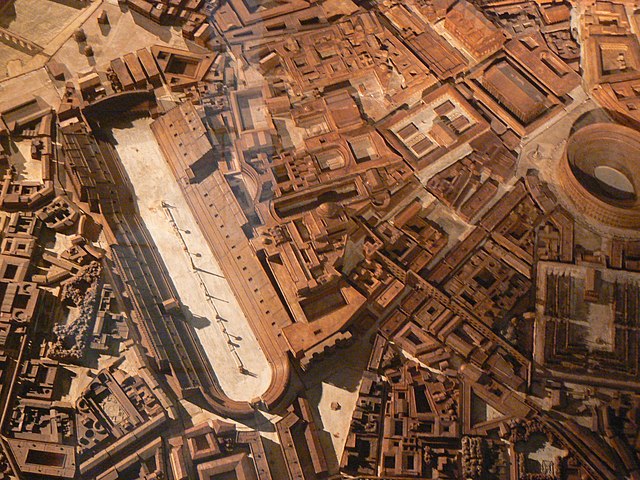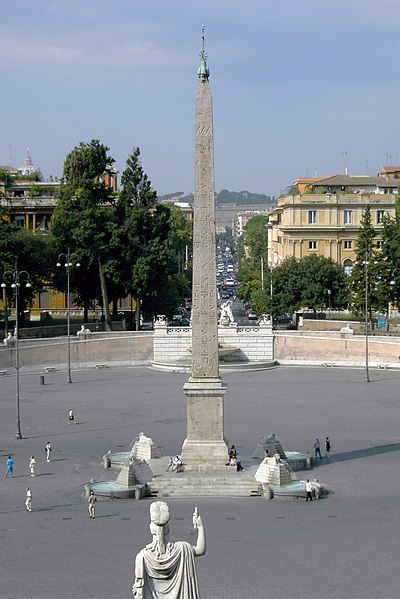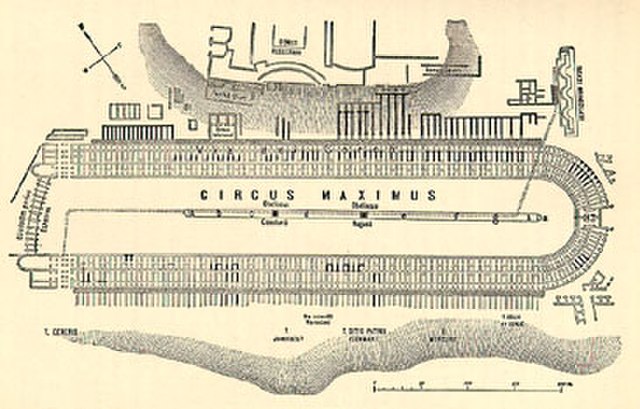The Circus Maximus is an ancient Roman chariot-racing stadium and mass entertainment venue in Rome, Italy. In the valley between the Aventine and Palatine hills, it was the first and largest stadium in ancient Rome and its later Empire. It measured 621 m (2,037 ft) in length and 118 m (387 ft) in width and could accommodate over 150,000 spectators. In its fully developed form, it became the model for circuses throughout the Roman Empire. The site is now a public park.
View of the Circus site from the south-east. The tower in the foreground is part of a medieval fortification.
Model of Rome in the 4th century AD, by Paul Bigot. The Circus lies between the Aventine (left) and Palatine (right); the oval structure to the far right is the Colosseum.
View of the Circus site from the south-east in 2019
The Obelisco Flaminio, now in the Piazza del Popolo, was once part of the dividing barrier (spina) at the Circus Maximus
Chariot racing was one of the most popular ancient Greek, Roman, and Byzantine sports. In Greece, chariot racing played an essential role in aristocratic funeral games from a very early time. With the institution of formal races and permanent racetracks, chariot racing was adopted by many Greek states and their religious festivals. Horses and chariots were very costly. Their ownership was a preserve of the wealthiest aristocrats, whose reputations and status benefitted from offering such extravagant, exciting displays. Their successes could be further broadcast and celebrated through commissioned odes and other poetry.
Modern depiction (1876) by Jean Léon Gérôme of a chariot race in Rome's Circus Maximus, as if seen from the starting gate. The Palatine Hill and imperial palace are to the left
Chariot racing on a black-figure hydria from Attica, ca. 510 BC
The Charioteer of Delphi, an anonymous charioteer who probably drove in the Pythian Games for Polyzalus, tyrant of Gela, in Sicily (480–470BC)
A plan of the Circus Maximus. The starting gates are to the left, and a conjectured start-line cuts across the track, to the right of the nearest meta.








